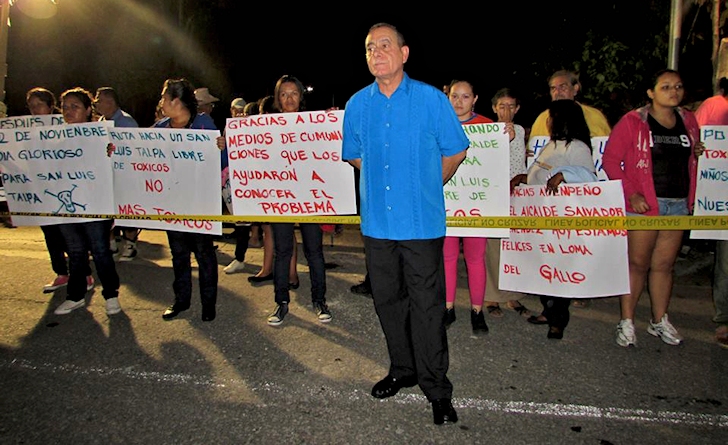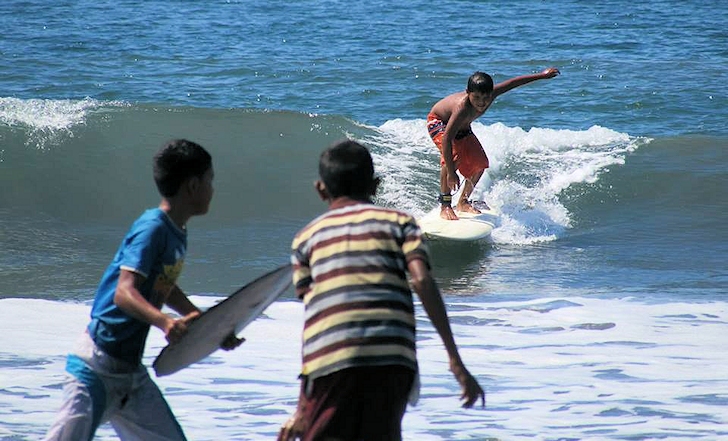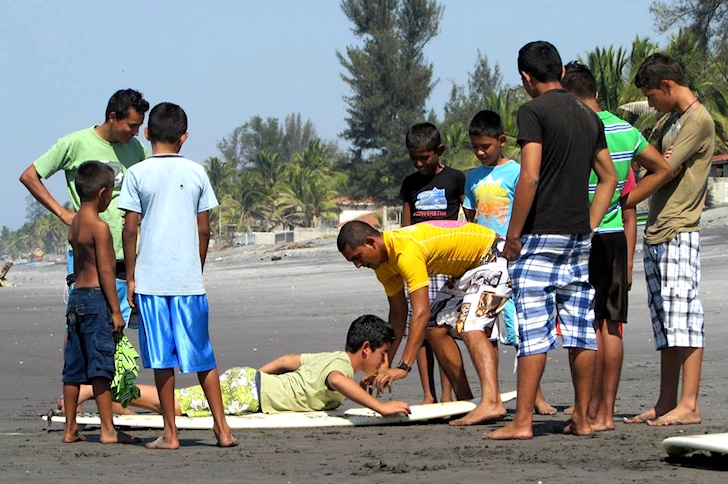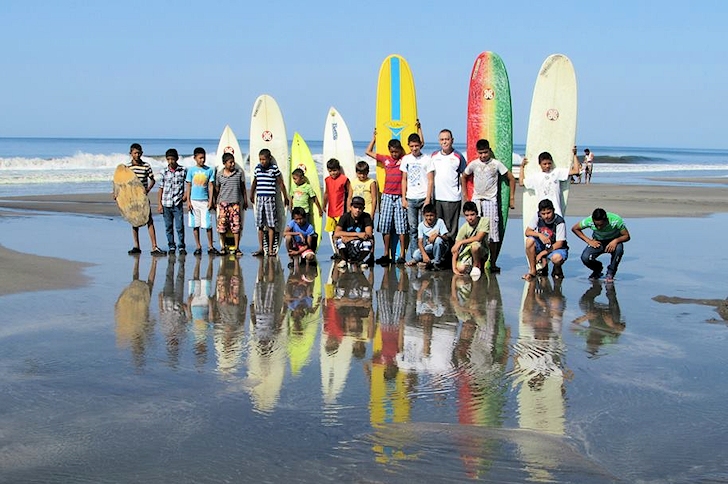In the 1960s, El Salvador began to import chemical pesticides and fertilizers heavily in order to increase agricultural yield.
In practice, that meant El Salvador became the dumpster for many of the chemical pesticides that were banned in the United States and Europe. Chemicals, such as Agent Orange used in the Vietnam War, found their way into El Salvador, branded under different names.
Cotton and sugarcane cultivations were the major crops raised for export, and farmers bought into the benefits of chemical fertilizers and pesticides in the 1960s.
So their usage continued for years and years with no regulation. And as long as money was made, everyone was happy.
Over the years, sugar cane cultivation thrived, while cotton cultivation slumped due to competition in international markets around the mid-1970s.
Around 1995, the first reports of people dying from kidney failure started to emerge.
In 2001, a well-known Salvadoran scientist became convinced that there was a relationship between pesticides and kidney failures.
He went to the Legislative Assembly to ask the government to ban a list of pesticides. Unfortunately, his words were ignored, and he was dismissed as a mad scientist.
Kidney failure casualties continued to climb to the point that the situation could no longer be ignored by the national press by 2010.
But other than reporting the number of deaths, the media would not identify the causes for the high incidences of kidney failures because many municipalities around the country depend on sugarcane for income and job creation.
Consequently, the situation worsened since the press failed to investigate and share their findings, and most mayors were too afraid to speak up.
One mayor, however, decided he had seen enough and became very outspoken in the national media.
Dozens of people in his municipality of San Luis Talpa were dying every month from kidney failures.
San Luis Talpa Mayor Salvador Menendez states that an average of eight out of every ten families has a member suffering from kidney disease.
He pressed for more investigations and came up with conclusive correlations between the contamination of soil and water by pesticides and the cases of kidney failures seen.
Most of the groundwater in El Salvador is already polluted with pesticides.
Contamination happens in different manners; the fastest occurs from spraying from the air. But in San Luis Talpa, contamination went even further.
This small town of 22,000 inhabitants was where Quimagro Corp. stored six tons of toxaphene, 12 tons of sponto, and a ton of parathion since 1984.
Quimagro Corp. ran into financial problems and declared bankruptcy, leaving abandoned barrels of agrochemicals unattended and exposed to the elements.
So naturally, over time, these chemicals leaked into the soil and water.
In 2013, four barrels exploded, releasing poisonous materials into the air. Plants, cows, and human beings died immediately.
Nobody was held accountable since Quimagro Corp. no longer existed.
With the persistent bad odors in the atmosphere, Mayor Salvador Menendez sought to get rid of all these barrels of agrochemicals, but nobody wanted them.

After pressuring the Ministry of the Environment, a home for these chemicals was found in the country of Poland.
The town of San Luis Talpa celebrated with the Mayor when the barrels of agrochemicals were finally shipped to Poland in November 2014.
Mayor Salvador Menendez has recognized that you cannot just ban toxic pesticides. By doing so, you are going to kill jobs in the sugarcane industry.
Starting in the first few months of 2014, he decided to promote surfing in San Luis Talpa to diversify the local economy away from sugarcane.
Because El Salvador has traditionally promoted right-hand point breaks over beach breaks, very few surfers went to San Luis Talpa before 2014.
San Luis Talpa municipality has about eight kilometers of coastline, with three main beach breaks: El Pimental, La Zunganera, and Amatecampo.
Fortunately, all these beach breaks have been spared from pesticide contamination as they are located about ten kilometers from the sugarcane fields.
And there are no big hotels in the area discharging sewage into the ocean like in other surf spots from the La Libertad region.
The timing of Mayor Salvador Menendez could not have been better for promoting surfing in his town.
El Salvador's right-hand point breaks have become victims of their own success; they are getting crowded over time.
So, for anyone, being a national or foreigner, who is looking to surf on uncrowded beaches with minimum hotel development, San Luis Talpa is an excellent choice.
It is widely accepted that beach breaks can handle crowds better than point breaks.
San Luis Talpa beach breaks are ideal for foreign surfers who are always pressed with time.
They are located no more than 15 kilometers away from the International Airport. There is no other country in Central America with an airport that is close to a high-quality surf spot.
It is awakening time for national surfers who have traditionally looked down on beach breaks.

On regional Central American contests, El Salvador has historically underperformed when it comes to tube riding.
Most Salvadoran surfers have become complacent on point breaks, which are not conducive to honing tube riding skills.
The beach breaks of San Luis Talpa cannot handle wave sizes as big as the point breaks - eight feet is probably the limit. But what they lack in size, they make up in fast, short rides in peaky waves.
One of the first steps Mayor Salvador Menendez took was to meet with the Salvadoran Surfing Federation (FESASURF).
It was agreed that the poor communities along the beach breaks needed a school to teach the local kids surfing.
This is not only a great pastime for the kids after they are done with regular school but also a crime prevention activity.
With no disposable income and no shopping centers in the area, the San Luis Talpa kids can spend most of their free time on weekdays surfing.
These days, you cannot become a top pro surfer by being a weekend warrior.
Of course, there are economic limitations. None of the parents can afford to buy boards for their kids. FESASURF coordinated an initial donation of 11 new and used boards.
The school started with 26 kids taking turns sharing these 11 boards. In a way, since the school owns the boards, there is a community spirit in the children. One limiting factor is ding repair.
Resin and fiberglass cloth are hard to get, and none of the kids have learned the art of ding repair yet.
After jump-starting the surf school, Mayor Menendez proceeded to organize the first surf contest in San Luis Talpa.
It took place in March 2014, only nationals from other surf spots participated, and cash prices were modest.
It was successful in paving the way for more contests in the future and for showing kids what is possible through surfing.

In September 2014, "Hand of Hope," a non-profit from the USA, came with volunteers to give a helping hand on a medical mission.
Not only did they help in vaccinating and evaluating the kids for health problems, but they also went even further by donating six surfboards to the children.
From November until February, the waves can get very small. On those days when the waves average one to three feet, the beach breaks deliver even better waves than the point breaks.
Between March and October, the waves get bigger, and San Luis Talpa beach breaks are the place to practice tube riding in waves averaging three to eight feet.
Bigger than eight feet means most likely a close-out in beach breaks, and it is better to look for point breaks.
Before San Luis Talpa discovered surfing, it seemed like a cursed city.
The only news coming out of the city tended to be funerals from residents dying from kidney failure and a Lone Ranger Mayor fighting government bureaucrats and transnational agrochemical corporations to ban toxic pesticides.
During 2014, through exhaustive research, it was discovered that Monsanto Corp. dangled a $277 million aid package (Fomilenio II) from the United States to El Salvador on the condition that the El Salvador government buys Monsanto GMO seeds at the expense of local farmers and native seeds.
The effect of these actions by the national government makes it an uphill battle for municipalities like San Luis Talpa to diversify the local economy.
Mayor Salvador Menendez does not surf; his passion is riding horses. But for all of his efforts in giving new hope by promoting surfing in his town, he has become the Surfing Mayor and San Luis Talpa the New Surf City of El Salvador.
Words by Jorge Dominguez
